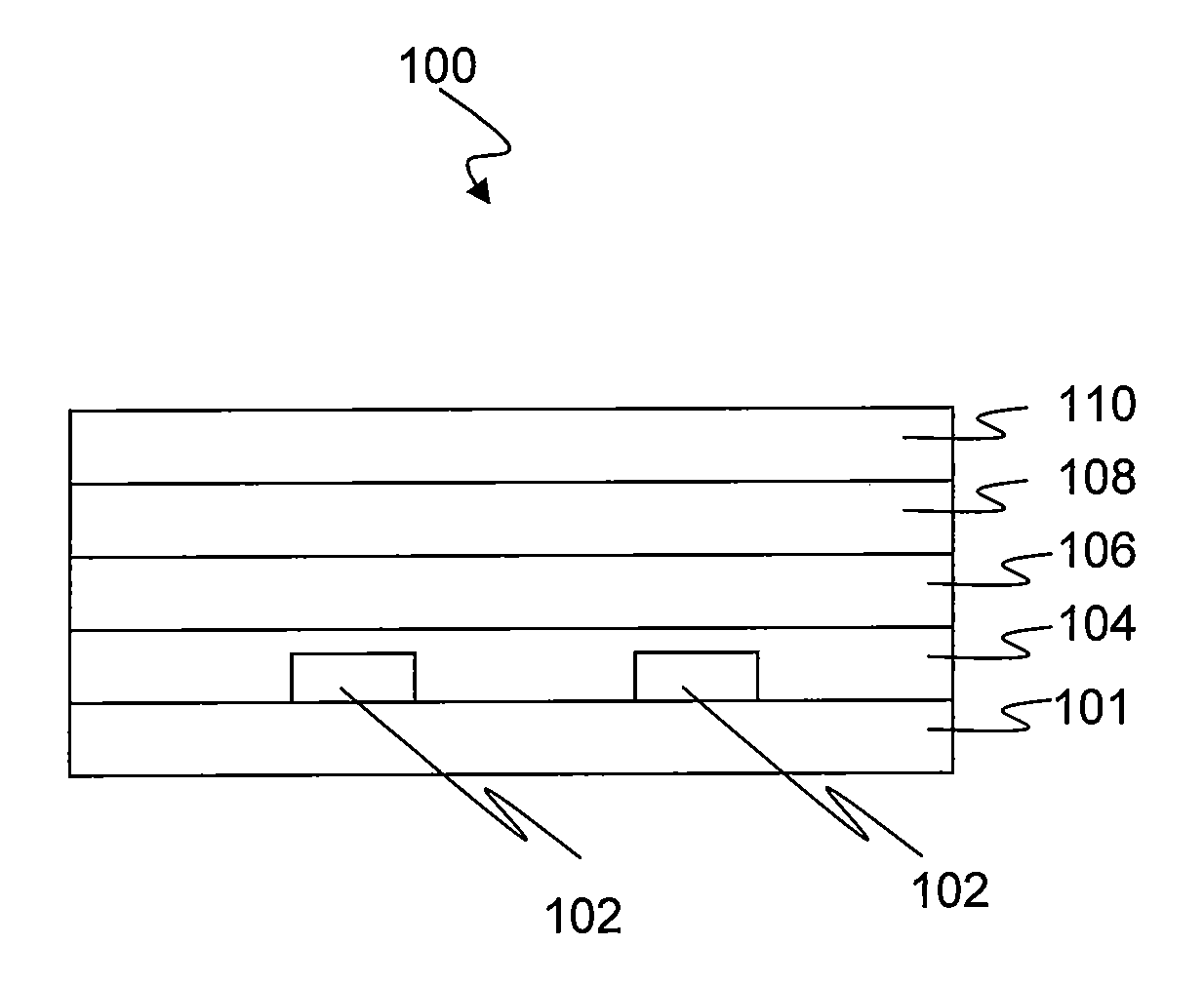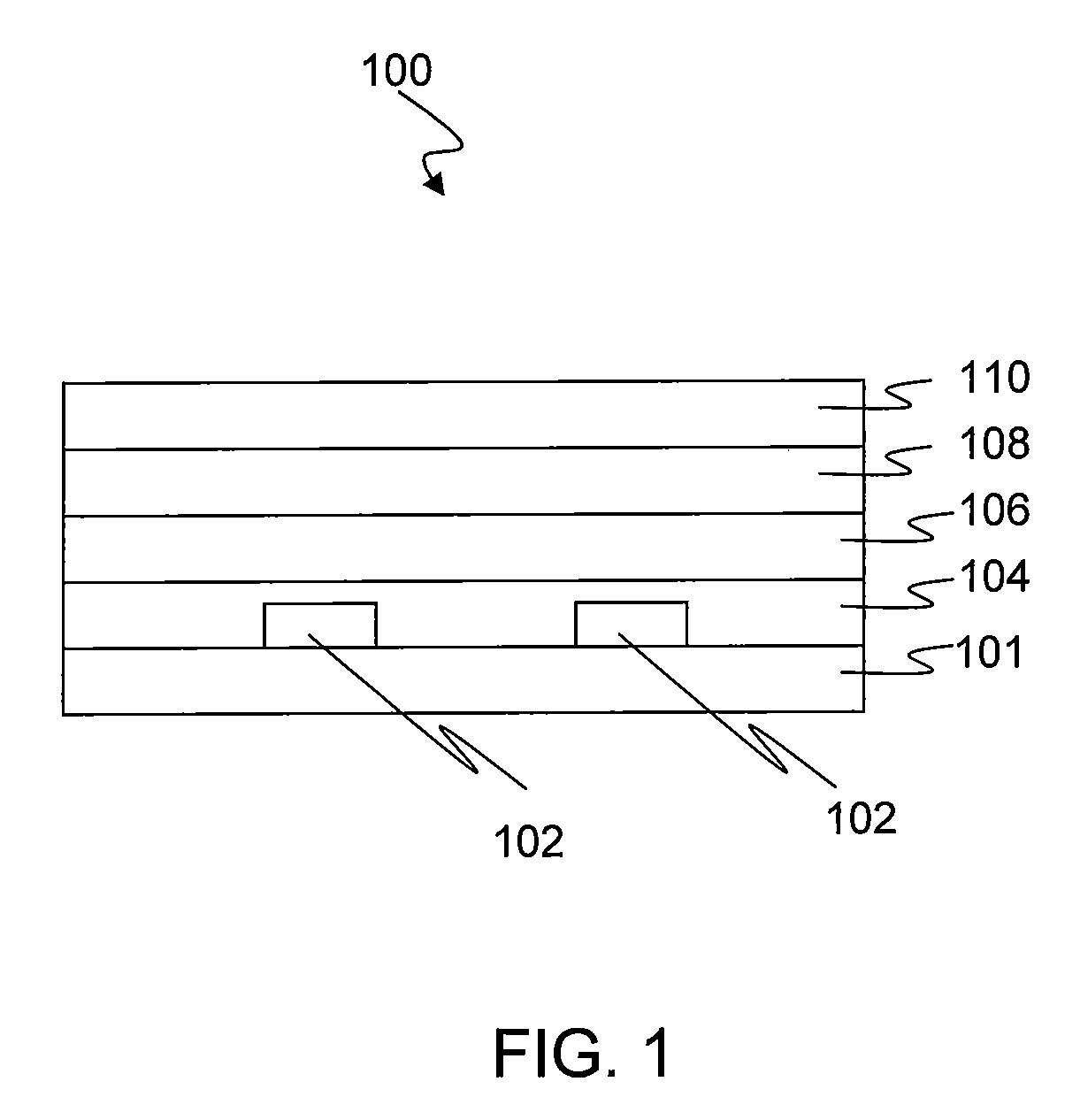Donor-acceptor dyad compounds in photovoltaics
- Summary
- Abstract
- Description
- Claims
- Application Information
AI Technical Summary
Problems solved by technology
Method used
Image
Examples
Embodiment Construction
[0019]Embodiments of the invention relate to compounds and their use in a photoactive layer to produce photovoltaic cells. The photovoltaic cells incorporate photoactive materials produced from dyads formed into an initial layer and then thermally cleaved to provide the photoactive layer. Cleavage of the dyads, such as synthesized fullerene anthracen-2-ylmethyl 3-(thiophen-3-yl) acetate dyads, or polymers of the dyads into separate molecules providing donors and acceptors facilitates in obtaining the photovoltaic cells with desired arrangement and interspacing of the donors and the acceptors relative to one another.
[0020]FIG. 1 illustrates an exemplary configuration of a photovoltaic cell 100 that includes a substrate 101, a first electrode 102 (depicted as two parallel strips), a first interfacial layer 104, a photoactive layer 106, a second interfacial layer 108 and a second electrode 110. The photoactive layer 106 contains the photoactive materials as described herein. While desc...
PUM
| Property | Measurement | Unit |
|---|---|---|
| Temperature | aaaaa | aaaaa |
| Bond | aaaaa | aaaaa |
Abstract
Description
Claims
Application Information
 Login to view more
Login to view more - R&D Engineer
- R&D Manager
- IP Professional
- Industry Leading Data Capabilities
- Powerful AI technology
- Patent DNA Extraction
Browse by: Latest US Patents, China's latest patents, Technical Efficacy Thesaurus, Application Domain, Technology Topic.
© 2024 PatSnap. All rights reserved.Legal|Privacy policy|Modern Slavery Act Transparency Statement|Sitemap



